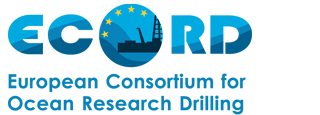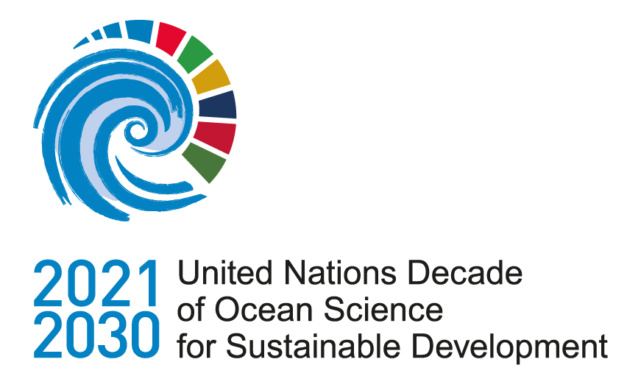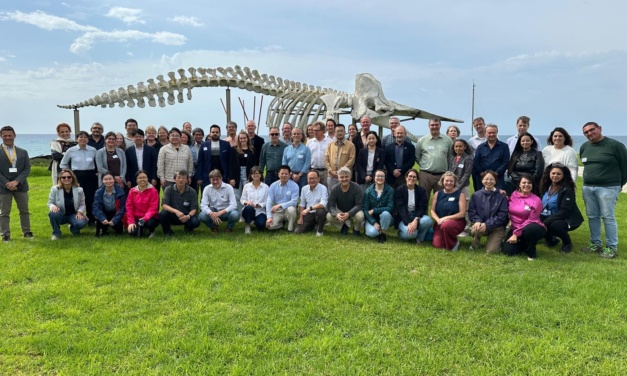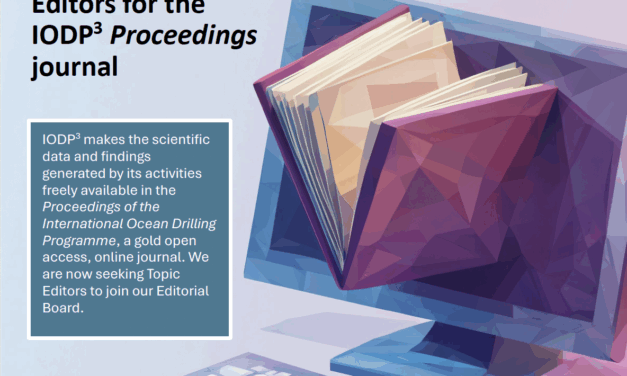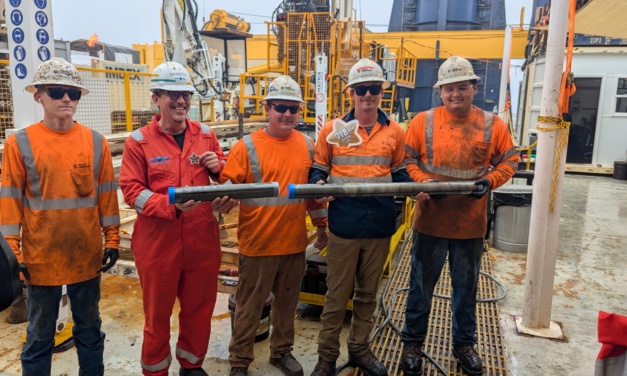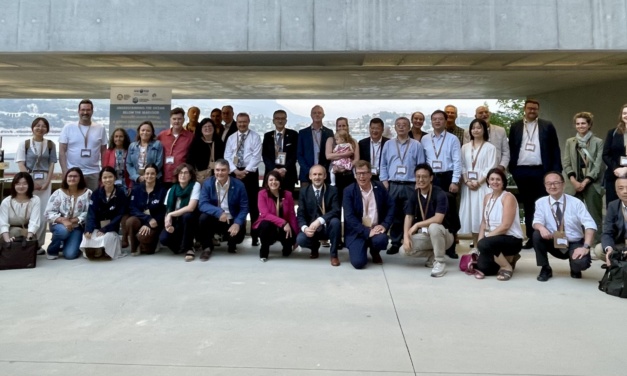74 days offshore, 718 cores, 871.83 meters of total core from three locations – this is the first outcome after the end of offshore operations of IODP³-NSF Expedition 501 “New England Shelf Hydrogeology”. The goal of the expedition was to take samples not only of sediment cores, but also of the water stored in sediment, both sandy aquifers and clayey aquitards beneath the ocean floor. Their existence has been known for decades but they remained virtually unexplored – until now.
The expedition is a joint collaboration between the International Ocean Drilling Programme (IODP³) and the US National Science Foundation (NSF). For the first time scientists managed to take water and sediment samples from beneath the ocean on the New England Shelf with the intention of understanding this offshore aquifer system.
”We set out with lofty goals to understand the origin and age of this offshore freshened groundwater system through sampling of sediment and water in a difficult drilling environment consisting of sand and mud. With great teamwork among the science team, the technical staff, and the drilling crew, we managed to get great samples including through multiple groundwater pumping tests,” says Prof. Brandon Dugan, Co-Chief Scientist of the expedition. “Those tests were a critical to the Expedition and a first for scientific ocean drilling. And we did it! Now we have the samples for the science team to really dive into the data and understand the system, which will be helpful for understanding other offshore freshened groundwater systems around the world.”
Co-Chief Scientist Rebecca Robinson adds: “The pump tests were challenging and required us to adapt our processes to get the best possible samples of the groundwater. In the end we pumped nearly 50,000 liters of water from nine distinct places, in terms of location and depth below seafloor – a huge success story for something so novel. For me in particular, as a geochemist not a hydrogeologist, I am so appreciative to everyone that leant their expertise. Especially the team of hydrogeologists from the British Geological Survey were outstanding.”
Co-Chief Scientist Karen Johannesson: “Some of the groundwaters were remarkably dilute with salinities around and even below 1 psu (practical salinity unit). To put this into a context that most can understand, 1 psu is the same as 1 gram per liter of total dissolved solids, or 1.000 mg/L. Seawater averages about 35 psu. Groundwaters with total dissolved solids less than 1.000 mg/L are fit for human consumption as a drinking water resource, whereas water with around 1.000 mg/L are fit for livestock. The presence of freshened groundwater in sandy, unconsolidated Paleogene and even Cretaceous continental shelf sediments 20 to 50 miles offshore is exciting. I look forward to learning more about when these groundwaters were recharged to these sediments and what the past climate was like when these groundwaters entered these offshore aquifers.”
During the expedition, the science team rotated on and off the Liftboat Robert transported by helicopter or supply vessel. The entire science team will meet for the onshore operations at the Bremen Core Repository, at MARUM – Center for Marine Environmental Sciences at the University of Bremen (Germany) in January and February 2026 to split, sample, and analyze the sediment cores and water collected. The cores will be archived and made accessible for further scientific research for the scientific community after a one year-moratorium period. All expedition data will be open access in the IODP³ MSP data portal in PANGAEA, and resulting outcomes will be published.
International approach
41 science team members from 13 nations (Australia, China, France, Germany, India, Italy, Japan, Netherlands, Portugal, Sweden, Switzerland, United Kingdom, USA) take part in the expedition that consists of two phases: offshore and onshore operations. Offshore Operations has taken place between May and early August 2025.
The expedition is conducted by the European Consortium for Ocean Research Drilling (ECORD) as part of the International Ocean Drilling Programme (IODP³), funded by IODP³ and the US National Science Foundation (NSF).
More Information:
About the expedition – https://www.ecord.org/expedition501/
Scientific Prospectus – https://iodp3.org/documents/expedition-501-scientific-prospectus/
About the international research collaboration – https://iodp3.org/about/
About the European part of the program – https://www.ecord.org/
and Mission-Specific Platform expeditions – https://www.ecord.org/expeditions/msp/concept/
Frequently Asked Questions – https://expedition501.wordpress.com/2025/02/19/faq1/Offshore
Caption:
The final core from the final Hole! From left: The Boart Longyear team Chris Redding, Co-Chief scientist Brandon Dugan, Chandler Maine, Nick Boehne and Lalo Aguilar. Photo: Everest@ECORD_IODP3_NSF
The Liftboat Robert. Photo: Everest@ECORD_IODP3_NSF
Contact:
IODP³-NSF Expedition 501 Co-Chief Scientists:
Professor Brandon Dugan
Colorado School of Mines, Golden (USA)
Email: dugan@mines.edu
Professor Karen Johannesson
University of Massachusetts, Boston (USA)
Email: Karen.Johannesson@umb.edu
Professor Rebecca Robinson
Graduate School of Oceanography, University of Rhode Island (USA)
Email: rebecca_r@uri.edu
IODP³-NSF Expedition 501 Operations:
Dave McInroy
ECORD Science Operator
British Geological Survey (UK)
Email: dbm@bgs.ac.uk
ECORD Outreach:
Ulrike Prange
ECORD Science Operator – Outreach and Media Relations
MARUM – Center for Marine Environmental Sciences
University of Bremen (Germany)
Email: uprange@marum.de
IODP3 Mission Statement
To advance scientific understanding of Earth’s processes and history by exploring and monitoring the subseafloor, unlocking insights into climate change, geohazards, the deep biosphere and Earth system evolution through international collaboration, cutting-edge technology, and open data sharing.
The International Ocean Drilling Programme (IODP³) is committed to fostering global scientific cooperation, building capacity across nations, and promoting responsible stewardship of our planet’s oceanic resources for the benefit of future generations.
